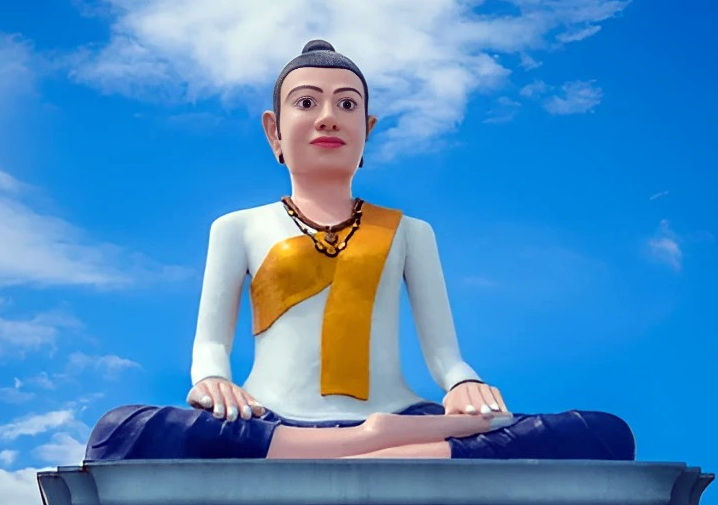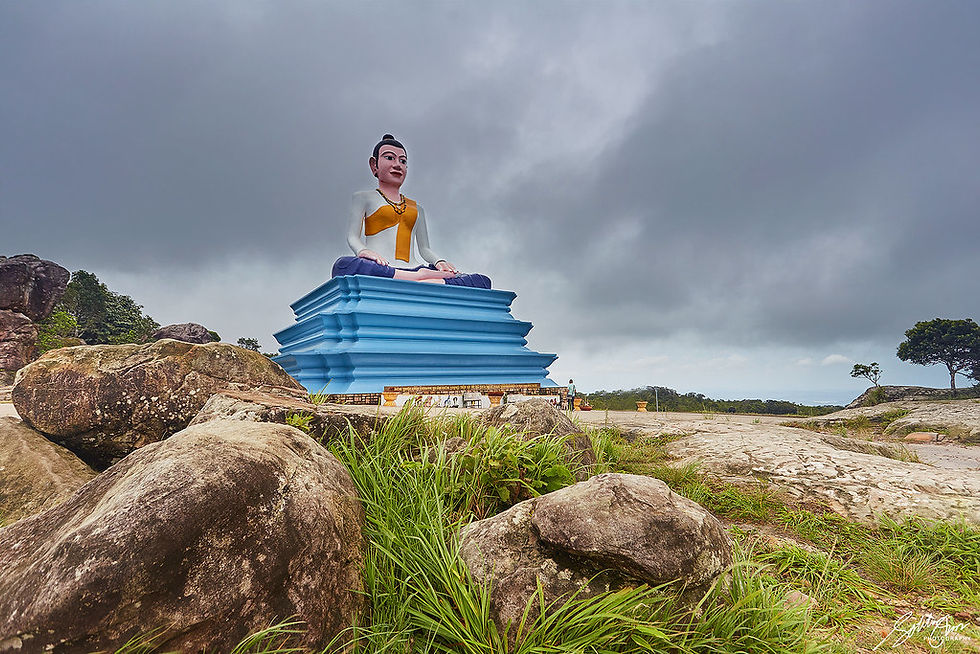Yeay Mao: The mysterious guardian of the Cambodian coast
- Editorial team

- Jul 21
- 4 min read
Updated: Jul 22
In the misty highlands of Cambodia and along the winding roads that run along the southern coast, a unique spirit reigns: Yeay Mao, the legendary matriarch and protector of travellers, fishermen and hunters.

Much more than a relic of folklore, her story combines heroism, tragedy and transformation, blending elements of animism, Buddhism and local history to form a legend that is uniquely Cambodian.
Birth of a myth
Yeay Mao, also known as Lok Yeay Mao (‘Grandmother Mao’), is one of Cambodia's most famous neak ta (ancestral spirits), particularly revered in the provinces of Kampot, Kep, Koh Kong and the bustling port city of Sihanoukville.
Her veneration extends along vital thoroughfares such as National Highway 4, where drivers ritually stop to pay homage to her, seeking protection from the misfortunes that can befall the unwary on Cambodia's dangerous roads.
Early accounts weave a web of uncertainty. Some say that Mao was a beautiful woman married to a powerful warrior; upon his death, she took command of the army, orchestrating daring campaigns against invading Siamese forces and becoming a celebrity and national heroine long before French colonial forces set foot on Cambodian soil.
Other versions present Mao as the wife of Ta Krohom-Koh (Grandfather Blood Colour), a tragic figure whose abandonment led to his violent death at the hands of a tiger, a horror that bound his restless spirit to this land forever, earning him the loyalty, respect and sometimes terror of travellers for generations.
Legends and lamentations
Cambodian oral traditions offer competing and often contradictory accounts of Yeay Mao, each imbued with local colour and meaning. In some versions, she is endowed with powerful supernatural powers, able to conjure armies of grass or tamarind leaves to torment enemy soldiers and turn the tide of battle. In others, her power is raw vengeance: abandoned by her husband and devastated by the death of her children, Mao wreaks havoc among the unfaithful and the unfortunate, her rage as formidable as her ability to protect. The rich symbolism of Yeay Mao still resonates today in rituals.
During her main festival in June, worshippers offer sacred foods (pig's head, chicken soup, decorated coconuts, banana trunks adorned with finely carved leaves) at her shrines.
Three statues must be present: Yeay Sau (another spiritual woman), Ta Snang Long (her ritually recognised son) and Long Mao, another incarnation of the matriarch herself. These ceremonies unite communities in acts of devotion and commemoration, blurring the boundaries between ancient animist rites and modern expressions of collective identity.

Devotion and divine punishment
Historical accounts from the late 19th and early 20th centuries tell of disastrous consequences for those who fail to honour her: illness, misfortune and even death. Supplicants seek not only her advice, but also her favour in conflicts: legend has it that she can avenge her enemies if prayed to in the right way.
Colonial upheavals further reinforced her mystery. When the French army demolished the original shrine in 1900, rumours began to circulate about epidemics and disasters befalling the region, presumed to be the result of the spirit's wrath.
During the Japanese occupation in the 1940s, forced labour and the desecration of her sacred site were seen as the trigger for further calamities, prompting locals to resume offerings and restore her cult.
Monuments and modernity
The legend of Yeay Mao is not limited to the past. In 2012, a 29-metre-high statue was erected at the top of Mount Bokor. This imposing figure, dressed in a black skirt, white shirt and yellow scarf, gazes serenely out over the forest and the sea. It not only pays tribute to the matriarch's enduring role in cultural memory, but also reflects the broader need of Cambodians for protective symbols in a rapidly changing world.
Roadside shrines continue to multiply. Following a resurgence of road accidents along the Phnom Penh-Preah Sihanouk motorway in recent years, the government has built a new shrine at Sre Ambil station, encouraging travellers to pause, reflect and seek the matriarch's protection before continuing their journey.
Living traditions
Popular belief attributes Yeay Mao with powers over fertility, luck and the fate of travellers. Offerings left at her shrines often include bananas and phallic symbols, intended to gain the gods' favour for family blessings and safe travel. On Kep Beach, the statue of the ‘Beautiful Lady’, sometimes associated with Yeay Mao, gazes wistfully towards the west, a silent testimony to the myth of the matriarch searching for her missing husband, a legend told by fishermen and beachgoers.
Almost all the inhabitants living along the coastal road can tell a story: tales of miraculous rescues, strange warnings in dreams or tragedies attributed to failure to honour this formidable spirit.
The spirit of Yeay Mao
The spirit of Yeay Mao lives on, not as a static relic, but as a living force that shapes and reflects the traditions, fears and aspirations of Cambodia. Her shrines dot the jungle and roadsides; her image dominates the mountains and beaches.
The matriarch lives on in the collective soul of Cambodia, a powerful reminder that the boundary between the world of the living and the world of the dead is, in this country, always negotiable. Her legend is as timeless as the Cambodian landscape itself: enigmatic, omnipresent and ever vigilant.
For those travelling south from Phnom Penh to the sea, a brief stop at the Yeay Mao shrine is more than a ritual: it is a reaffirmation of faith in the invisible, a request for safe passage and a tribute to the eternal magic of Cambodia's protective matriarch.







The Origins of "Bhabhi Ki Chudai": The concept of "bhabhi ki chudai" can be traced back to the Indian tradition of arranged marriages, where a man's sister-in-law is often considered a taboo subject. This has led to the creation of a fantasy world where the taboo is explored and broken, often in a consensual manner. The genre has evolved over time, with various sub-genres emerging, including "devar bhabhi ki chudai" (brother-in-law and sister-in-law) and "moti bhabhi ki chudai" (overweight sister-in-law).